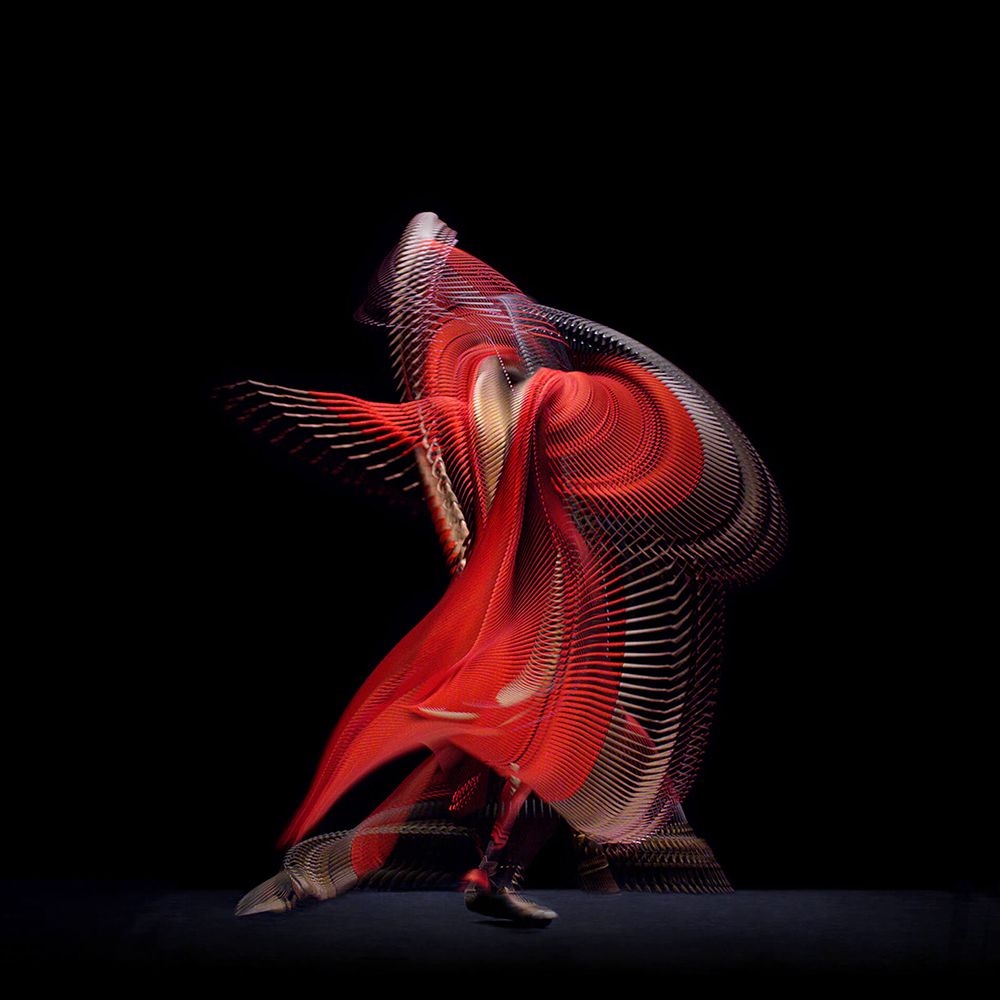Fairs
Meet the artist: Giles Revell
Giles Revell, our campaign artist for Affordable Art Fair Battersea Autumn (20 - 23 October) talks career defining moments, and how science and the environment are the driving forces behind his captivating work.

Our latest campaign for Affordable Art Fair Battersea Autumn this October takes an inspiring photograph by Giles Revell as its focus. The work, Abstract Dancers 3, Dark Blue is part of Giles’ photographic series capturing dancers from The Royal Ballet mid movement, to stunning ethereal effect.
We spoke to the artist, Giles Revell, on the story behind the piece and how science and technology are the driving force behind his captivating photographs.
What drew you to photography? When did you decide to pursue it as a career?
That’s when the balance between science and art tipped and I decided to join a London photographic studio as an assistant in my mid-twenties. I have never doubted that I made the right decision. Photography has given me independence, a means to communicate concepts and explore new ways of seeing.
“Natural history is a big part of my work.”
Giles Revell

How did the collaboration with The Royal Ballet, come about for Abstract Dancers?
In 2012 I wanted to make sculpture from the expressive movement of a dancer: the idea of combining music and dance to create a physical sculpture was fascinating. I collaborated with a choreographer, a motion capture company and the 3D artist Ben Koppel. It was in the early days of motion capture and the dancer wore a suit to trace every movement of their body within the studio. She responded to Massive Attack’s ‘Teardrop‘, a beautiful, ethereal and haunting piece of music. I then transformed her body movement information into a rendered red high gloss surface and presented it as a video, stills and small-scale printed sculptures. The project was titled 100 frames (relating to 4 seconds of footage represented in each sculptural form).
Unknowingly, 100 frames became the groundwork for the Royal Opera House commission. In 2018 the Royal Opera House were looking for imagery to launch the redesign of their venues, and their agency, Atomic, recommended me as the artist to create dance imagery with a fresh perspective. I drew on the earlier kinetic work of 100 frames and developed a looser, more immediate way of capturing the dancers with film and photography. Whilst developing a method that would allow the artists to move uninhibited with freedom away from the trappings of CGI and motion capture.


What is your creative process when starting out with a new project?
There are many ways that I arrive at a new project. I live by the sea so I am always scanning for natural substances, and I’m often collecting and testing new materials. I love observing their behaviours and learning to control and provoke reactions and characteristics to create something extraordinary. The potential of old and new technologies merging and fusing is also fascinating to me. All my thoughts and influences, interests and processes are recorded in my mini sketchbook.
“Many of my ideas about the environment are shaped by my training as a geologist”
Giles Revell
Your work is described as exploring the boundaries between science and art. Can you tell us more about that?
Many of my ideas about the environment are shaped by my training as a geologist. I like the rigour of analysis, the forensic attention to detail and the excitement of discovery. I am excited by aesthetics but also a subject yielding something else that is beyond my imagination. Natural history is a big part of my work. I have always approached it with the aim of presenting familiar or seemingly mundane subjects from a very different viewpoint, whether it is using X-rays or a Scanning Electron microscope, CT scanners or purely controlling light to a quality and level that goes beyond scientific record.
Over many years, I have collaborated with institutions like the Natural History Museum and Royal Holloway University. Inspired by satellite imagery, my recent work explores global themes of fragility and transition, refining materials in the studio to mimic large-scale natural processes, which I then photograph. The work symbolically explores images around escalating climate issues.

Digital Archival Print, Edition of 25, £900, Crane Kalman Brighton
What is your career-defining moment, or thing you’re most proud of?
I have been very fortunate to have several career highlights for which I am proud and grateful. The Royal Opera House, is undoubtedly one of those moments. To collaborate with such a highly esteemed and artistic institution was an enormous privilege. As was finding out that the V&A Museum were buying one of my images for their print collection. But I think my most outstanding achievement is to have one of my Fabulous Beast images hanging permanently in the Natural History Museum, over Robert Hooke’s 17th century microscope; alongside a copy of Micrographia (the first ever book to include illustrations of insects and plants as seen through microscopes).
What does the Affordable Art Fair mean to you – and what can we expect to see from you at Battersea Autumn?
The Affordable Art Fair is a wonderful opportunity to engage with people, over all things ‘art’. I love the democratic philosophy of the fair and the fact its open and accessible to all. I will be showing a large selection of my Dancer series as I tend to produce large bodies of work on one solo theme, before releasing the next project. I’m looking forward to being inspired by new artists, contributors and guests alike, and the artistic dialogue and discussion this creates.
You can find more from Giles Revell at Crane Kalman Brighton‘s stand at Affordable Art Fair, Battersea Autumn from 20 – 23 October, alongside over 100 other leading exhibiting galleries still to be announced, and 1,000s of stunning affordable artworks.
Tickets on sale soon. Sign up for our emails for news and announcements.

